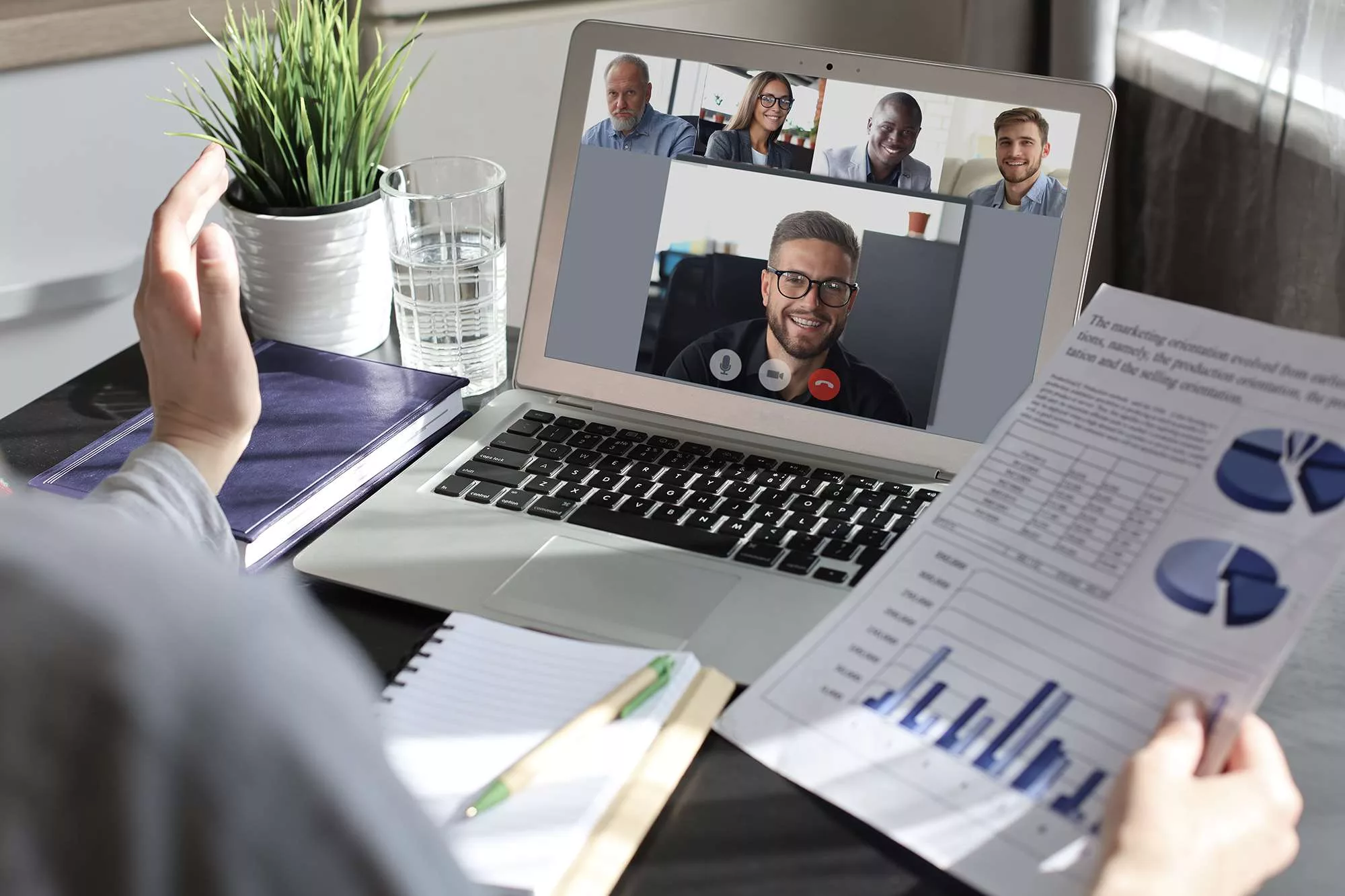In today’s fast-paced business environment, it’s continuous learning and development. This isn’t just about ticking boxes for training requirements; it’s about fostering an atmosphere of growth and improvement.
In this article, We’ll explore the strategies HR can use to promote continuous learning and development. We’ll delve into the importance of a learning culture, the role of leadership in fostering this culture, and how to integrate learning into the daily workflow in the following pattern.
- Enhanced Skills and Competencies
- Improved Retention and Recruitment
- Strategies for HR to Ensure Continuous Learning and Development
- Establishing a Learning Culture
- Providing a Variety of Learning Opportunities
- Encouraging Self-Directed Learning
- Implementing a Continuous Performance Management System
- Setting Clear Performance Goals
- Identifying Development Opportunities
- Creating a Learning and Development Budget
- Allocating Resources for Learning and Development Initiatives
- Investing in Technology and Learning Platforms
- Tracking and Evaluating the Effectiveness of Learning Programs
- Collaboration with Managers and Leaders
- Providing Support and Resources for Managers and Leaders
So, if you’re in HR and you’re wondering how to keep your team’s skills sharp and their knowledge up to date, you’re in the right place.
Before we start if you are starting with a career in HR, you can check out the CIPD level 3 course, for the ones on intermediate you can try CIPD level 5 HR or CIPD level 5 L&D, and the ones looking to upscale to get to the stage of HR Director’s level should try CIPD level 7.
Why Continuous Learning and Development is Important
As we venture deeper into the importance of HR’s role in promoting continuous learning, we need to understand why it’s crucial in the first place.
Increased Employee Engagement and Satisfaction
Employees have a natural desire for growth, self-improvement and the chance to master new skills. When a company initiates and provides opportunities for continuous learning, it taps into this innate desire. This results in higher employee engagement and satisfaction.
Moreover, research has affirmed this positive relationship between learning opportunities and job satisfaction. In fact, according to The Learning Wave, 42% of employees say learning and development is the most important benefit when deciding where to work, outranking even health insurance!
| Employee Preference (%) | |
| Learning and Development | 42 |
| Health Insurance | 32 |
Enhanced Skills and Competencies
In today’s rapidly evolving business landscape, standing still equates to falling behind. Continuous learning ensures that the workforce stays up to date with industry developments, trends and necessary skills.
Interestingly, a study by Towards Maturity found that businesses with a strong learning culture had 34% better response rates to customer needs, and 26% greater ability to deliver quality products.
Also Checkout: How can HR create a Positive Culture in the Workplace?
Improved Retention and Recruitment
Finally, a culture of continuous learning plays a vital part in both talent acquisition and retention. Prospective employees are drawn to organisations that prioritise professional development — it’s a significant part of an enticing employer brand. Moreover, learning and development opportunities make current employees feel more valued, thereby increasing their loyalty and motivation.
LinkedIn’s 2018 Workforce Learning Report highlights that 94% of employees would stay at a company longer if it invested in their career development.
So, now we’ve established the importance of continuous learning and development, let’s move on to exploring some strategies for HR to create a culture of growth.
Strategies for HR to Ensure Continuous Learning and Development
HR departments across the globe face the crucial task of perpetuating an environment conducive to continual learning. It’s here where potential is unlocked, skillsets are broadened and a thirst for knowledge is kindled within employees. To foster this type of environment, there are a few effective strategies that can be integrated.
Establishing a Learning Culture
A company’s propensity for continuous learning begins with its culture. The company strategy should be moulded around the concept of incessant learning and growth. To instil a competitive and progressive learning culture within the company, HR must start promoting learning as a necessity, rather than an option. Employees should be inspired by upper management to continuously look for ways to upgrade their skills and expand their knowledge base.
HR can help facilitate this learning culture through regular training sessions, performance reviews and by celebrating employees who continuously learn and improve. It’s to be acknowledged that a robust learning culture will not only keep employees motivated but will also retain them in the long run, by being central to their career growth.
Providing a Variety of Learning Opportunities
A successful learning environment offers a spectrum of learning opportunities to meet the varying needs, skills and interests of its unique set of employees. This could range from formal in-house training sessions and workshops to external courses and conferences. In the digital age, e-learning has also emerged as a viable platform to cater to the needs of remote workforces and those who prefer a more flexible learning environment.
To create a well-rounded learning and development program, HR could incorporate a blend of different learning formats like microlearning, experiential learning, social learning and more. Here, diversification is key; providing a multitude of avenues helps ensure that everyone’s learning styles are catered for, thereby maximising employee participation and engagement.
Encouraging Self-Directed Learning
An essential yet often overlooked factor in fostering a robust learning environment is the promotion of self-directed learning. This doesn’t rely on structured training sessions or guided learning but allows employees to take control of their learning journey. HR can enable this by offering materials, resources, and platforms that allow employees to explore and learn at their own pace. By building this capacity, the employees not only learn but also cultivate the habit of proactively seeking knowledge.
Self-directed learning helps employees become more resilient and adaptable, as they are more likely to engage with learning opportunities that align with their individual needs and goals. Providing employees with autonomy over their learning path can also boost their self-confidence and drive their motivation to learn.
Continuous learning and development should not be viewed as a one-off event, but rather an ongoing journey. By establishing a learning culture, providing diverse learning opportunities and fostering self-guided learning, HR departments can help build companies that are adaptable, innovative and geared up for success. The strategies provided here offer a transformative approach for HR to foster an environment that facilitates continuous learning and development.
Implementing a Continuous Performance Management System
Shifting towards a continuous performance management system can directly contribute to continuous learning and development. It’s a transformative approach that places a substantial focus on fostering a non-stop learning culture while adequately balancing staffers’ performance and developmental needs.
Setting Clear Performance Goals
Clear goal setting is the stepping stone for every active performance management system. It’s not about merely assigning tasks. Instead, it’s about allowing employees to comprehend where their contributions align with the business’s broader vision. This pushes them to learn and acquire the skills needed to achieve these goals.
Setting well-defined, achievable, specific, and relevant (SMART) objectives can steer staff in the right direction. With these clear goals, personnel will inherently take the initiative to learn new techniques or enhance their existing skills to meet the expectations set forth.
Regular Performance Feedback and Coaching
Replacing the outdated annual review process with consistent feedback and coaching can greatly fuel continuous learning. I cannot overstress the need for regular, honest feedback from each employee. It’s the only way they can identify their strengths and weaknesses and work towards enhancement.
One-on-one sessions, regular performance reviews, and ‘in-the-moment’ feedback tend to boost an individual’s understanding of their duties while highlighting areas that require improvement. It forms an essential component of fostering a continuous learning environment, where staff can proactively work on bettering their performance.
Moreover, regular coaching based on feedback helps individuals to upskill and eventually holds the potential to bring out the finest productivity levels in them.
Identifying Development Opportunities
Continuous development encapsulates the essence of a thriving business. Both from an organisational and individual perspective, development comes down to finding and capitalising on opportunities to learn.
HR departments need to identify and map out development plans for each employee based on their specific needs, strengths, and goals. Potential techniques could include offering cross-departmental training programs, providing e-learning resources, or sponsoring employees to attend conferences or undertake courses.
This cycle of identification, learning, and application results in an organisation-wide uplift in skills, knowledge, and capability. By turning learning into a day-to-day activity, HR ensures it’s embedded right at the core of every individual, essentially fostering an intellectual, learning-driven community.
Creating a Learning and Development Budget
Establishing a learning and development budget is a key part of building a continuous learning culture. While enthusiasm and commitment are crucial, adequate funding underpins any significant progress. That’s why we must strategically allocate resources, invest in tech and learning platforms, and evaluate the effectiveness of our programmes.
Allocating Resources for Learning and Development Initiatives
For HR, developing a comprehensive budget demands a fine balance. It’s essential to map out where and how money will be spent, be it in-house training, external workshops, or professional development courses. The budget must also cover a variety of learning styles – one size does not fit all. Consider the following elements:
- Estimation of upfront costs: This includes training material, hiring trainers, or licensing learning software.
- Ongoing expenses: Regular upkeep of tech, subscription renewals, and continuing education needs. These steps ensure we’re nurturing staff development while keeping our financial health buoyant.
Investing in Technology and Learning Platforms
In the digital age, technology has become a mighty lever for learning. A sizeable portion of any robust learning and development budget should go towards emerging tech and learning platforms. When selecting a platform, keep the goals and learning styles of the organisation in mind. Don’t forget:
- Flexibility: Many employees favour learning in their own time, at their own pace.
- Scalability: As the organisation grows, so must the ability to accommodate more learners. When we put our budget to work in tech, we create flexible, accessible learning paths tailored to meet our unique requirements.
Tracking and Evaluating the Effectiveness of Learning Programs
The final piece of the puzzle is program evaluation. We must measure how our initiatives impact individual performance and the organisation. Key performance indicators (KPIs) can help us assess our programme effectiveness:
- Retention Rate: Signals how many employees continue to engage with the learning material.
- Attendance Rate: Measures compliance with the learning initiatives. By regularly monitoring these, we can quickly adjust our strategies and ensure the continuous learning and development of our team. Implementing a strong evaluation system enables us to see the full picture and make evidence-based decisions for the future.
Remember, a well-planned learning and development budget is not just about numbers – it’s a strategic plan paving the way for continuous learning and stepping up our success. It is an ongoing process that demands constant monitoring, evaluation, and reallocation of resources. Stay committed, stay patient, and the results will follow.
Collaboration with Managers and Leaders
The relationship between HR, managers and leaders plays a crucial role in ensuring continuous learning and development within an organisation. HR must align themselves with these key players to create a successful learning culture.
Identifying Skills Gaps and Development Needs
HR needs to work closely with managers and leaders in identifying skills gaps and development needs within their teams. I’ve observed that managers with a close pulse on their team are best placed to recognise these gaps, as they directly work with their team members. Skills gaps could range from technical skills related to the job to soft skills like communication or leadership abilities that help an employee grow. Together with HR, managers can identify what’s missing and create a targeted learning and development plan.
Aligning Learning and Development with Business Goals
Data is king today, and big, successful businesses know that more than most. Aligning learning and development programmes with business goals isn’t simply a suggestion – it’s a necessity.
Let’s look at the table below on how the integration of learning initiatives with business goals impacts the overall performance of the company:
| Business goals | Learning initiatives |
| Increase revenue | Sales training, negotiation skills |
| Improve productivity | Time management, efficiency practices |
| Enhance customer satisfaction | Customer service training, empathy workshops |
Thus, it’s clear HR and managers need to ensure that the learning initiatives they implement can directly contribute to achieving the business’s main objectives.
Providing Support and Resources for Managers and Leaders
Having a learning and development strategy in place is only part of the battle. HR needs to back their directives with tangible support. This support goes beyond financial resources for training programmes it includes providing learning technology, platforms and time for these activities.
In addition, managers and leaders should be equipped with the skills to coach and guide their teams-aided by HR. This support is crucial in fostering a learning culture and promoting continuous professional development for every team member. After all, achieving a common goal requires a collective effort.
By focusing on collaboration, HR can effectively ensure continuous learning and development within their organisation. Through strategic initiatives like identifying skills gaps, aligning learning with business goals and providing support for managers, they can create a workforce constantly ready to grow and adapt.
Conclusion
It’s clear then that HR plays a pivotal role in fostering continuous learning and development. By cultivating a learning culture and making learning a necessity, HR can drive employee engagement and satisfaction. Providing diverse learning opportunities and championing self-guided learning are key. Implementing a continuous performance management system, setting clear goals, and delivering regular feedback also contribute significantly to development.
It’s important to remember that collaboration is at the heart of this process. HR, managers, and leaders must work together to identify skills gaps and development needs. Aligning these with business goals and providing necessary support ensures a cohesive approach. By adopting these strategies, HR can create an environment that not only nurtures continuous learning and development but also propels the organisation towards its strategic objectives.
Check out Avado, the UK’s most trusted CIPD course provider today for HR and L&D courses:
CIPD Level 3 HR Courses: The CIPD Level 3 Certificate in People Practice is ideal for anyone looking to start a career in either HR or Learning and Development.
CIPD Level 5 HR Courses: The CIPD Level 5 Associate Diploma in People Management will help you build on your existing HR knowledge.
CIPD Level 5 L&D Courses: The CIPD Level 5 Diploma in Organisational Learning and Development is the most comprehensive course available for L&D professionals, ideal for you if you want to formalise your existing experience, skills and knowledge.
CIPD Level 7 HR Courses: The CIPD Level 7 Advanced Diploma is aimed at expanding learners’ autonomy so they can strategically direct organisations and their people.

 13 min read
13 min read 



